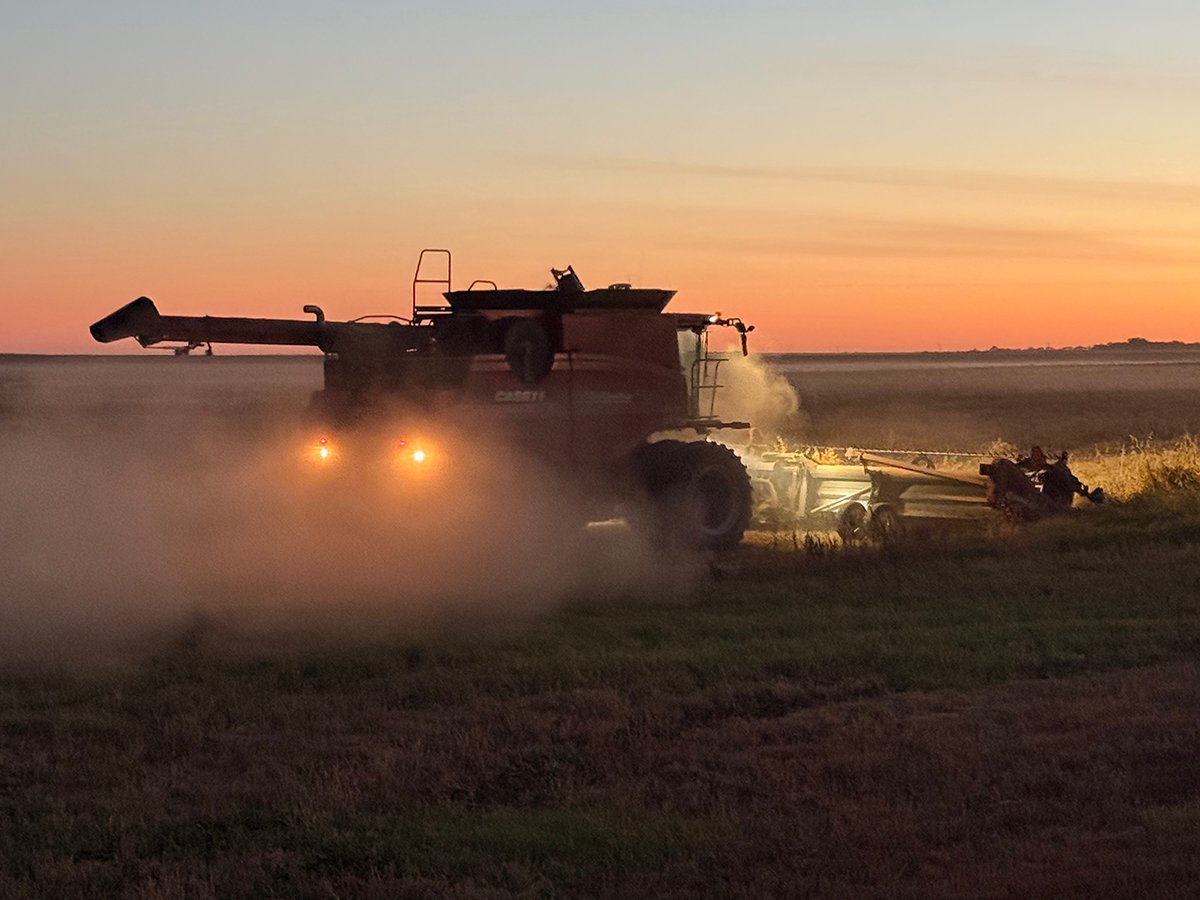Barley vote
To the Editor:
The time has arrived once again for the “Silent Majority” to mark an X in favor of the Canadian Wheat Board.
The Honorable Ralph Goodale has done the sensible thing in deciding to have a simple yes-or-no barley vote. It is long overdue and a welcome opportunity to end a very divisive debate.
The vocal minority who are advocating for “dual” marketing of both wheat and barley are madder than ever.
They of course want a cluttered ballot, similar to the much-touted Alberta and Quebec referendum votes, where confusion, dismay and stress reigned supreme. That is the saddest way I know of to sway voters into voting in a way that results in a positive victory for the writers of the ballot.
Read Also

Downturn in grain farm economics threatens to be long term
We might look back at this fall as the turning point in grain farm economics — the point where making money became really difficult.
This vote is comparable to the last wheat board and advisory committee election when a vast majority was achieved by true and strong CWB supporters.
It was not an NFU victory, it was not an NDP victory, it was ordinary, satisfied CWB supporters that are content to escape the stress of worrying about day to day market decisions.
To sell outside the board is to add fuel to the fires in the trading pit in Winnipeg, where people yell and scream and tear their hair out. It is a scene of speculation, greed, despair and uncertainty, fueled by vast sums of money on behalf of investment clubs, corporations, grain merchants, grain dealers, pension plans, to name a few.
For all the thousands that rallied on Aug. 14, 1996, in full support of the CWB, now is your chance to spread the good word that will give the federal government the mandate needed to strengthen, not weaken and destroy our CWB.
– Lorne Radcliffe,
Cardale, Man.
CWB prices?
To the Editor:
We have been told time and again about the wonderful job the Canadian Wheat Board is doing selling our grain for us.
I can remember quite well before we had a Canadian Wheat Board, of going to the Rex elevator which was about 15 miles northeast of Lloydminster, with my brother-in-law in the winter of 1930-31. There was very little snow and an open winter.
Sleighing was poor, so we took about two-thirds of a sleigh box of wheat, something over 40 bushels. The load netted us somewhere over $13. Brought 30 cents a bushel. That was open market, no CWB until 1935, when it first started.
With wheat at 30 cents a bushel at that time, we could buy bread for l0 cents a loaf or 12 for $1. In other words, get three loaves of bread for the price of a bushel of wheat.
In 1930, 100 pounds of flour was $1.98, a little over six bushels of wheat at 30 cents. We could buy gas for the old Model T for 15 cents a gallon. Turner Valley gas was $7 a barrel in Lloydminster, that is a 45-gallon drum. So we could get two gallons of gas for a bushel of wheat before the CWB monopoly, which was put into force under the War Measures Act in 1943.
In 1994, which is about 64 years later, the farmers took somewhere around $2.50 a bushel for most of their wheat.
A bushel of wheat in 1994 would buy them two loaves of bread at $1.25 at the bakery.
In 1994, flour is approximately $7.50 for 10 kg or $30 for 100 lbs. or 12 bushels of wheat. In many parts of this province, it won’t buy them one gallon of gas at the gas pumps. Gas varies from 45 cents to 60 cents a litre.
Is this what the CWB monopoly has done for the farmers in 50 or 60 years?
In the 1930s, the farmers did have the Crow rate to help them a little. In 1995 they lost that.
No wonder they need GRIP and NISA and anything else they can get.
Before the war of 1939, a farmer could milk a few cows or sell eggs, chickens, etc. But since the creation of the marketing boards, there are only a few people who have the quotas to do this. The quotas are mostly handled by brokers, etc. who make more trading in them than the average farmer ever thought of making in a lifetime.
In a recent Western Producer issue, the NFU was asking for true accounts of grain prices back before the CWB monopoly. This true account of the early 1930s may not be what they want to hear.
I recently had a CWB supporter tell me that oats sold for eight cents a bushel in the fall of 1930 and were worth $1.20 in the same elevator the next spring, which is pure hogwash.
The same person tried to tell me that grain sold for cash at the elevators in the U.S.A. That the seller paid storage to the grain company until it was loaded on the boats for export. But he was unable to explain how they did this. Maybe the NFU has an explanation.
They seem to come up with some strange stories in support of the CWB, but just aren’t around when there is a grain handlers strike on because they are partly financed by the Labor Unions involved.
– Ivor Clarke,
Sunset House, Alta.
Many options
To the Editor:
We read of producers who are continually complaining about freedom of choice and ownership of grain after it has been harvested.
Under the present system, the producers have many options available to them.
Since the CWB only handles two grains, wheat and barley, the first choice is to seed neither of these two grains, and in their place, seed rye and oats, both off-board grains that could be used as rotation crops.
Failure to use these only proves their lack of confidence in the system which they are advocating. Another choice would be to obtain a permit that would allow them to sell to U.S.A. (which is a very limited, unstable market) or to an outlet of their choice, legally.
Yet another choice (which appears to be quite popular to some) is to sell to the U.S.A. illegally without a permit, thus risking the seizure of their equipment, and lawyer and court costs, plus fines and/or penalties as assessed by the laws of the land.
There is still another option, very simply post a For Sale sign on your farm and move to the U.S.A. to farm, where only one system of marketing exists, that being a daily fluctuating market for all grains, controlled by the grain monsters of the day.
You can presently choose between the CWB for your off-shore sales, where the brokers have to share the profits with the producers in a final payment; therefore, you have an equity in your grain until you receive your final payment.
Or you can sell to the private companies where their brokers keep all the profits … .
A marketing board to control the producer’s cost of production would be very beneficial, if it operated even close to the effect of the CWB.
Such a board did operate during World War II, the Wartime Prices and Trade Board. We don’t need a war for it to operate, I’m sure.
– Joseph Hagyard,
Glenboro, Man.
















